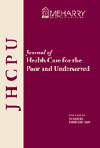Routine Screenings and Assessment in Primary Care:
- Step 1: Establish a training plan to support all staff in adopting suicide safe communication strategies.
- Step 2: Identify comprehensive screening tools like the PHQ-9 and C-SSRS.
- Step 3: Establish a policy to screen all patients over the age of 12 using a standardized screening tool.
- Step 4: Establish protocol for responding to positive depression screens and/or answers of “yes” to question 9 on the PHQ-9.
- Step 5: If possible, update your organization’s EHR to reflect steps outlined in the “Help from your EHR” listings.
- Step 6: Train staff on the protocol for administering the screening and documenting patient responses in the patient record.
Care Management and Referral Process:
- Step 1: Review the education materials at Now Matters Now during visits with patients who are at risk of suicide.
- Step 2: Train staff and providers on helping at-risk patients make a safety plan.
- Step 3: Develop organizational policies that clearly state what clinicians and care teams can do to counsel patients on lethal means, including the protocol to follow in the event a patient brings a weapon or other lethal means to the clinical setting.
- Step 4: Monitor to ensure that care transitions are documented and flagged for action in an electronic health record.
- Step 5: Develop internal written policies and procedures, contracts, and memoranda of understanding with outside organizations, including local crisis centers, for safe care transitions.
Routine Screenings and Assessment in Primary Care:
Action Steps, Training, & Resources
Step 1: Establish a training plan to support all staff in adopting suicide safe communication strategies.
Step 2: Identify comprehensive screening tools like the PHQ-9 and C-SSRS.
Step 2: Identify comprehensive screening tools like the PHQ-9 and C-SSRS.
Step 3: Establish a policy to screen all patients over the age of 12 using a standardized screening tool.
Step 4: Establish protocol for responding to positive depression screens and/or answers of “yes” to question 9 on the PHQ-9.
Step 5: If possible, update your organization’s EHR to reflect steps outlined in the “Help from your EHR” listings.
Step 6: Train staff on the protocol for administering the screening and documenting patient responses in the patient record.
Care Management and Referral Process:
Action Steps, Training, & Resources
Step 1: Review the education materials at Now Matters Now
during visits with patients who are at risk of suicide.
Step 2: Train staff and providers on helping
at-risk patients make a safety plan.
Step 3: Develop organizational policies that clearly state what clinicians and care teams can do to counsel patients on lethal means, including the protocol to follow in the event a patient brings a weapon or other lethal means to the clinical setting.
Step 4: Monitor to ensure that care transitions are documented and flagged for action in an electronic health record.
Step 5: Develop internal written policies and procedures, contracts, and memoranda of understanding with outside organizations, including local crisis centers, for safe care transitions.
 Follow
Follow


















Follow Us!